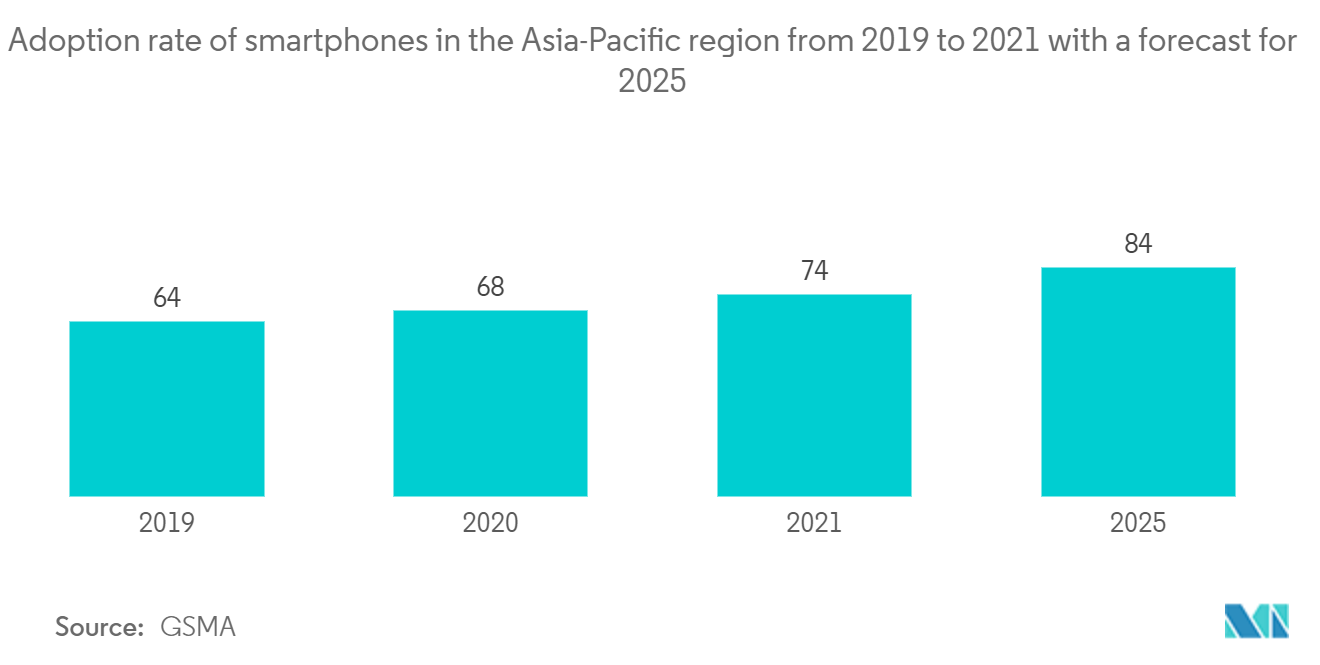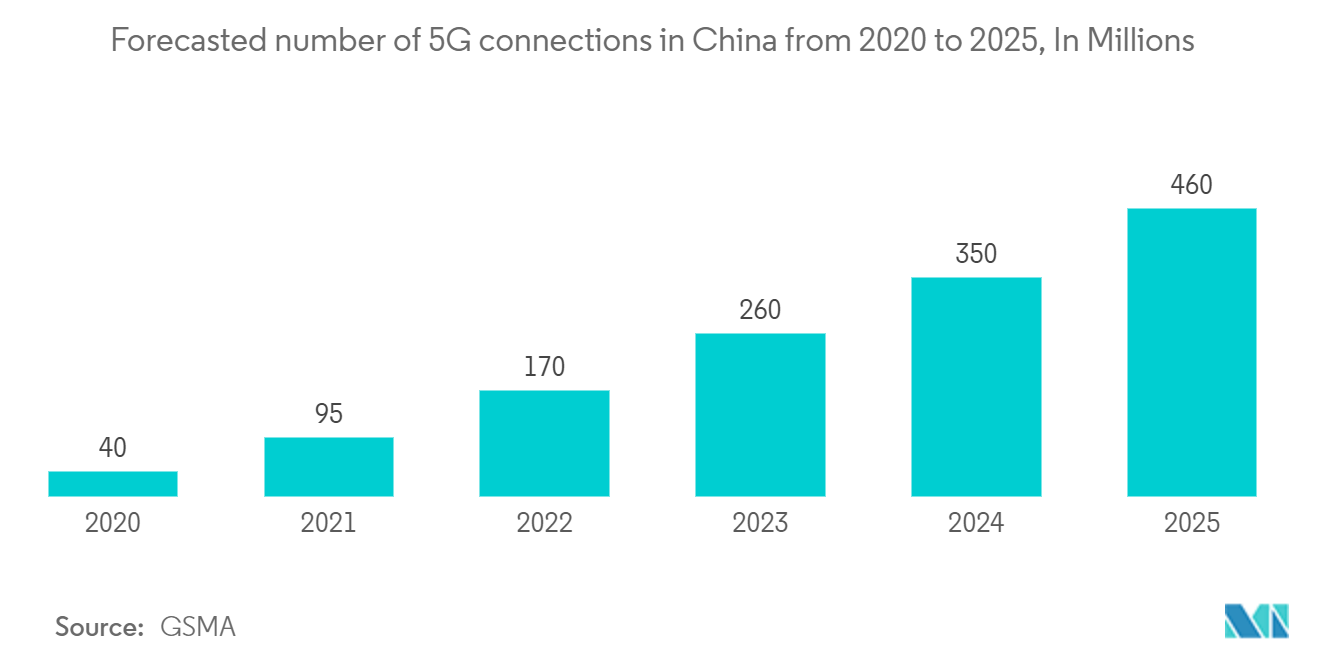Market Trends of Asia Pacific IT Device Industry
This section covers the major market trends shaping the APAC IT Device Market according to our research experts:
Robust Demand for Smart Phones
- The smartphone segment of the Asia-Pacific IT device market significantly impacted the economy, contributing 5% of the region's GDP, or USD 770 billion in additional economic value last year. According to the Mobile Economy Asia-Pacific report by GSMA, the number of unique mobile subscriptions in Asia-Pacific is expected to rise from 1.6 billion in the last year to 1.8 billion in 2025. Notably, the mobile penetration rate may increase from 59% to 62% from 2021 to 2025.
- Mobile internet penetration for the region is expected to escalate from 44% in 2021 to 52% in 2025. This growth is attributable to the expected surge in the number of mobile internet users in the region. Furthermore, the GSMA report predicts a significant jump of not less than 200 million new sim connections from 2021 to 2025 in the region. This results in the sim card penetration rate moving from 100% in 2021 to 105% in 2025.
- During the second quarter of 2022, the global smartphone market was dominated by Samsung Electronics, followed by Apple. The other strong players in the market during the period mentioned above are Oppo, Xiaomi, and Vivo. Most of the global smartphone market is held by Asia-Pacific manufacturers. Also, in the future, tech manufacturing organizations in Asia Pacific regions are expected to invest more funds, primarily in business process automation, automated process enforcement, and supply chain planning.
- Customers are choosing smartphones with better technology and improved features in terms of memory, camera capacity, and refresh rates. Notably, owing to the rapid rollout of 5G in countries like China, South Korea Japan, along with the inclusion of cutting-edge innovative technology like IoT and AI in the devices, is constantly pushing the demand for new technology-enabled smartphones. As the technology ecosystem is ever-changing, there will be a consistent demand for newer-generation smartphones in this region.
- According to GSMA, for the Asia Pacific region, the adoption rate of smartphones reached 74% in 2021 and is projected to increase to 84% by 2025. In addition, it is anticipated that 62% of mobile subscribers will be present in the same year. Encouragingly, the smartphone adoption rate for this region is anticipated to be 20% in the period between 2019 to 2025.

China Holds a Substantial Market
- China has the highest population in the world, and the country is one of the topmost technologically developed countries globally. China's rapid technological advancements are leading the demand for innovative IT devices. China leads the pack in many areas, such as artificial intelligence (AI), 5G telecommunication networks, telephone device making, and many others.
- China is now the market leader for IT devices worldwide, ahead of the United States, Japan, and India. For the last year, China had the phone segment's highest revenue. Data from GSMA Intelligence shows that China had 1.63 billion mobile phone connections at the start of this year. The top two smartphone manufacturers in 2Q of this year were Honor and Vivo.
- Although the public sector's activities in China's PC industry are causing turmoil, the robust growth witnessed last year highlights the immensity of the untapped market. China's PC market grew 9% and approximately more than 16 million in 4Q of 2021. During the previous financial year, China saw robust laptop and Notebook shipments. Lenovo is the leading player in the Chinese PC market, followed by HP and Dell.
- Notably, supercomputers have advanced significantly in recent years as processing power is increasingly in demand. Due to the inclusion of 186 Chinese supercomputers on the most current list of the world's Top-500 supercomputers, which accounts for roughly 40% of all those on the list, China is now the No. 1 owner of the fastest supercomputers in the world for the eighth time since November 2017. The Chinese government might use up to ten exascale supercomputers by 2025.
- Furthermore, it is anticipated that 5G will gradually alter how people currently use their phones. 5G has also emerged as a prominent participant in the smartphone sector. Across the country, the demand and shipments of 5G-capable smartphones have drastically increased during the last few quarters.
- According to GSMA, 5G connections in China are anticipated to reach 460 million by 2025, making up 28% of all national connections. The size of the Chinese market was anticipated to surpass the combined size of commercial 5G services in South Korea, the United States, Australia, and the United Kingdom, with a predicted average annual growth rate of 63%.


